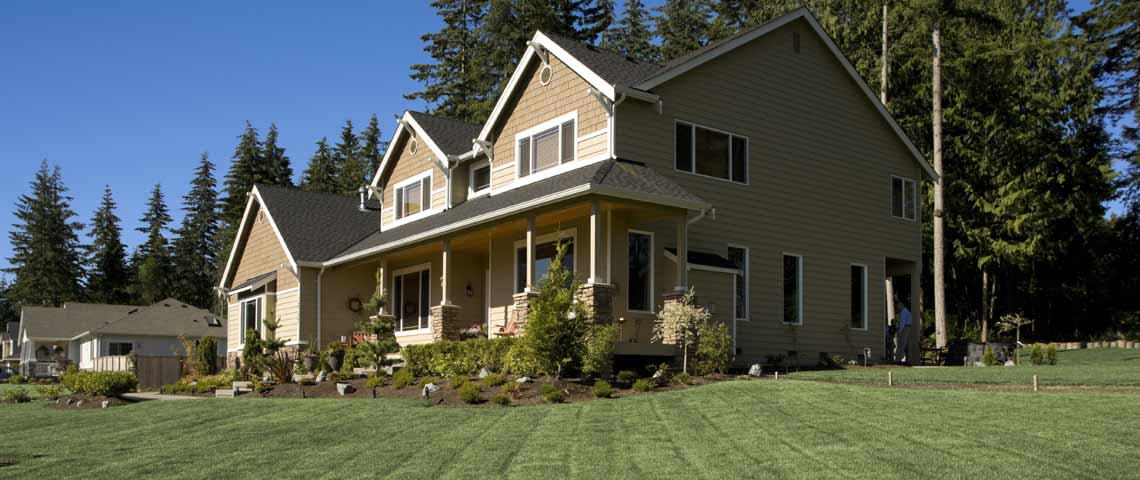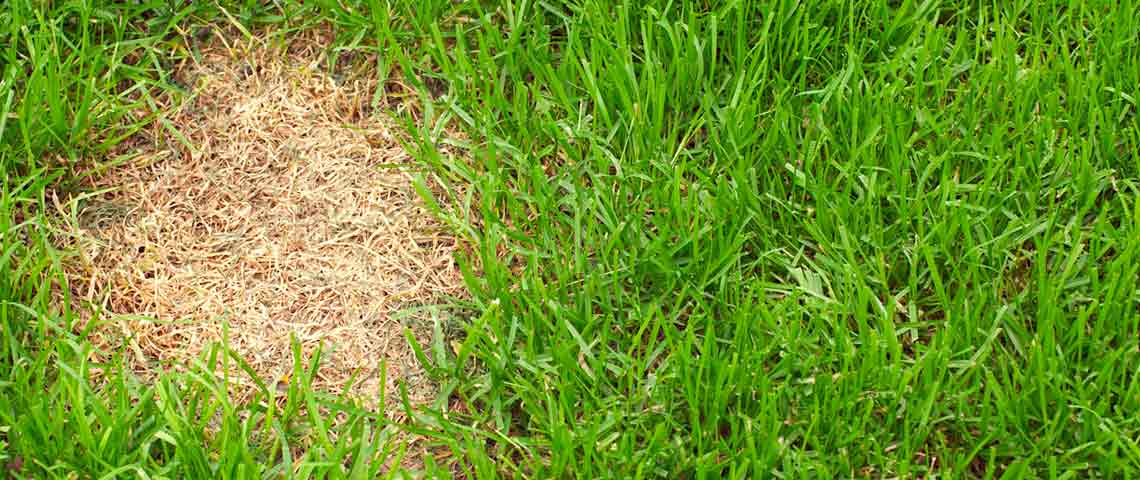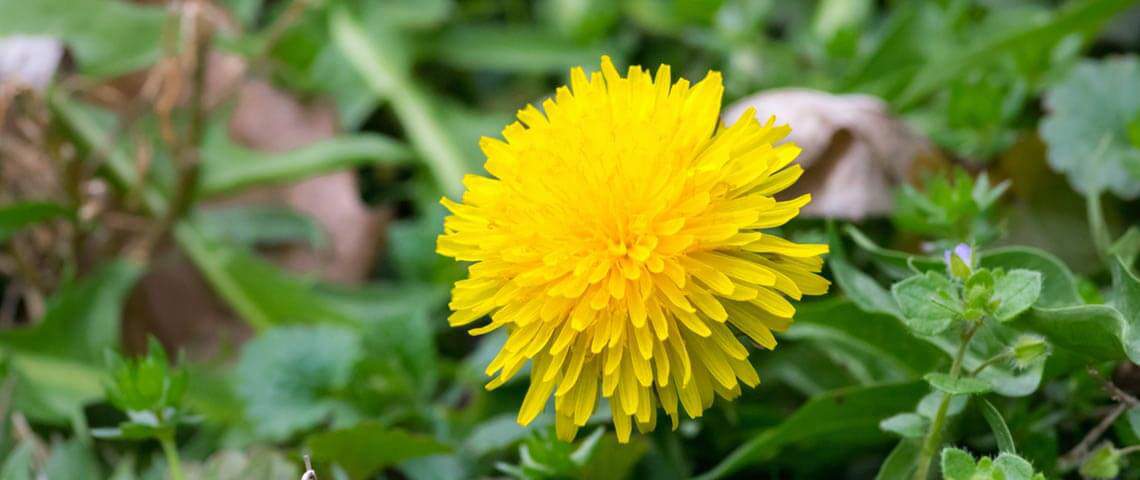How to Fix the Most Common Lawn Problems
A little maintenance (and a keen eye) can keep lawn problems, such as weeds and bald spots, at bay.
A healthy, lush lawn is an essential element of your yard. It's more than just a backdrop for your barbecues; it's where your kids play and where family memories are made. But nothing puts the brakes on a celebration or a relaxing afternoon outdoors than unsightly spots or uneven growth. Fortunately, many lawn problems are quick to identify and easy to remedy with the right products and tips. Here are 10 common problems, along with the best solutions:
1. Uneven growth in the shade
Many types of grass seed don't love very shady spots. If you've got uneven growth in the shade, take these three three steps:
- Make sure your trees are properly and regularly pruned.
- Find a shade-tolerant grass type for your region.
- For bare spot repairs in shady areas, turn to Pennington Smart Patch II for shade-tolerant grass. For textural interest, intermix a ground cover — either blooming or foliage focused.
2. Patchy slope
It's not impossible to grow grass on a slope; the trick is to manage the incline so that the grass can root deeply. There are two ways to do that:
- Match the type of grass with your region and the growing conditions. For example, don't plant a shade-tolerant variety in a sunny spot or the lawn will be stressed due to lack of sun.
- Terrace the space by breaking up the slope with naturalistic groupings of oversize boulders, or establish more formal terraces with retaining walls. Whatever design solution you choose, stepping the incline will reduce runoff and enable the grass to grow more evenly.

3. Weeds
Weeds of all types love to take root in lawns, and they're more apt to take over when your grass isn't well tended. To rid your yard of weeds, practice healthy lawn habits:
- Mow regularly with a sharp blade.
- Measure the rainfall, and then supplement as needed. Most lawns need about one inch of water a week. If you're in a particularly dry part of the season, water in the morning before temperatures rise.
- Fertilize with Pennington Full Season Weed & Feed with Crabgrass Control 25-0-8 to prevent emerging grassy weeds and fight existing weeds while you feed your lawn.

4. Bald or bare spots
Patches of dirt in your lawn, whether due to heavy foot traffic or disease, are unsightly and invite the invasion of weeds. To fix, take these three steps:
- Dig up the spots, as well as several inches of lawn surrounding them.
- Lightly till the areas and rake
- Add topsoil and apply Pennington Smart Patch II bare spot repair mix for speedy results. Following label instructions, watering as needed.
5. Damage caused by pets
Cat and dog urine contains damaging amounts of nitrogen, which can cause your lawn to brown. The solution is two-fold:
- Prepare the area according to label instructions, then repair with a Pennington Smart Patch II bare spot repair mix best suited to your grass. These dynamic seeding mixtures help neutralize soil problems, including pet urine, with quick results.
- Create a designated play and relief area for your pet on the perimeter the lawn.
6. Rusts (yellow-orange powdery spots)
Plant diseases known as rusts are caused by fungal spores, which can turn your lawn reddish-brown or yellow-orange. Rusts leave a powdery residue that can rub off on your hands and make inroads on areas of grass that are underwatered, extremely overwatered, or low on essential nutrients, such as nitrogen. Rusts spread easily and weaken grass, so practice good lawn-care habits:
- Fertilize annually with Pennington Full Season Lawn Fertilizer 32-0-5. Just one application and you're good to go.
- Aerate annually.
- Don't overwater or underwater.
- Mow regularly.
Additionally, it's a good idea to perform a soil pH test once a year to determine the levels of phosphorus and potassium, and help you adjust nutrients as needed. Soil tests are available for a nominal fee from county extension offices.
7. Light rings filled in with grass
Sometimes called fairy rings, these unsightly spots are often found near patches of mushrooms. Simply remove them as you would bald spots, and then plant fresh grass seed, such as Pennington Smart Seed. Always select a grass seed appropriate for your region.
8. Moss
Moss can quickly overtake lawns that are compact, wet, shady and under fertilized. To eliminate moss, try these strategies:
- Prune trees as appropriate to maintaining their health to decrease the amount of shade and encourage grass to grow.
- Aerate and de-thatch to encourage healthier grass and relieve compacted soil. In thin grass areas, till the ground lightly and overseed with a grass that's appropriate for the sun/shade conditions.
- Monitor both the amount of water the lawn receives and the pH level of the soil. Perform a soil test at least once a year. Then follow the recommendations of your testing lab. For overly acidic soil, you may need a high-quality lime, such as Pennington Fast Acting Lime. For overly alkaline soil , your soil lab may recommend sulfur.
9. Thinning grass
A lawn that's less than lush likely suffers from bad soil and/or the wrong type of grass. Test your lawn's pH levels, and adjust as needed. Then, overseed using a grass type that's appropriate for your region.

10. Suspicious holes
Critters, such as raccoons and moles, can damage your lawn by digging, creating wilted, patchy areas. What those animals are searching for are common lawn pests called grubs. Grubs, if left unchecked, could infest an entire lawn. To find out if you have grubs, peel back a little patch of lawn and look for small, white, worm-like creatures. To remedy, use Sevin Insect Killer Lawn Granules to reach grubs where they hide, in all your garden areas, and kill the adult beetles that create them, too.
A weekly inspection of your lawn can help you identify and eliminate problems before they become landscape catastrophes. Monitor the health of your grass, and it will reward you with months of green, lush growth.
Pennington; Pennington 1 Step Complete and Smart Seed are registered trademarks of Pennington Seed, Inc.



